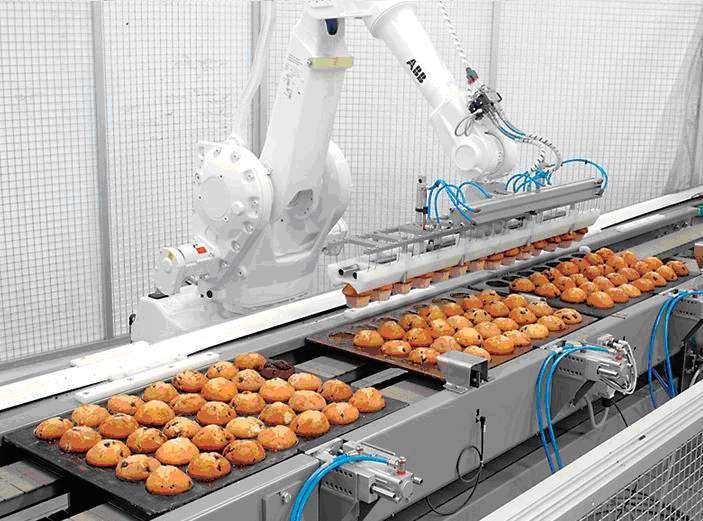Not long ago, robots and automation were mostly reserved for the auto industry or sci-fi fantasies. Today, they are rapidly transforming everything from burger joints to boardrooms. If you think your business is immune, it’s time to think again.
More and more services that once relied on trained professionals—like CPAs and stockbrokers—are now available via applications such as TurboTax or e-Trade. Restaurants, reacting to both rising labor costs and looming increases in minimum wage, are eliminating human servers in favor of self-ordering and payment kiosks.
In restaurants, rising labor costs and the threat of significantly higher minimum wages have pushed brands to adopt automation even faster. Chains like Chili’s, Olive Garden, and Applebee’s have rolled out self-service kiosks where customers can order and pay without ever speaking to a server.
McDonald’s: A Case Study in Automation at Scale
Perhaps the most iconic example of this shift is McDonald’s. Once famous for its in-store food prep, the company now does much of its preparation offsite. French fries, which were once sliced in-house, now arrive frozen and ready to cook—processed by machines in centralized factories. This shift allows restaurants to operate with nearly half the staff they used just a few years ago. And it’s not just McDonald’s; many fast food and quick-service restaurants are following suit. Chains like Panera, Wendy’s, and even independent restaurants are following suit to stay competitive.
U.S. Tariff Policy and the New Era of Onshoring
A major force accelerating this change is U.S. tariff policy. In an effort to reduce dependency on foreign manufacturing, especially from geopolitical rivals, the U.S. has imposed tariffs to encourage companies to bring production back home. This strategy has triggered a wave of onshoring—relocating factories from countries like China back to the United States.
But there’s a catch: U.S. labor is more expensive, and there are fewer workers willing—or available—to take on manufacturing jobs. The aging workforce, coupled with demographic declines and a growing aversion to manual labor, means that even onshore production must lean heavily on automation to remain cost-effective.
Ironically, the tasks that once moved offshore to take advantage of cheap labor are now being handled by robots here in the U.S. Automation doesn’t just replace foreign workers; it replaces human effort altogether.
Goodbye Outsourcing, Hello “Robot/Application Arbitrage”
For decades, outsourcing to lower-wage countries, such as China, was the only way U.S. manufacturers could remain competitive. But today, the math is changing. With automation, the cost of labor becomes less of a determining factor. Why ship manufacturing to China when a robotic line in Cincinnati can do it cheaper and faster—without language barriers, international shipping, or supply chain headaches?
This is why manufacturing is slowly coming back to the U.S.—but don’t confuse that with a return to human jobs. The factories coming back are highly automated and require a fraction of the labor force. It’s a shift from human labor arbitrage to what might be called “robot/application arbitrage.”
Germany is a great example of this trend. Despite having one of the highest labor costs in the world, it remains the economic engine of Europe. Why? Because it has leaned heavily into robotics and automation. In other words, it’s not how cheap your labor is—it’s how few laborers you need.
And the concept doesn’t end with hardware. Enter the AI revolution.
AI, Agents, and Workflow Integration
Today’s automation isn’t just mechanical—it’s also digital. With the rise of artificial intelligence and tools like ChatGPT, Claude, and Perplexity, we’re seeing a surge in task automation that mimics white-collar work. AI “agents” can now plan and execute tasks across systems, from sending emails to generating marketing copy, performing data analysis, or even coding software.
This is where application arbitrage truly shines. Platforms like Make.com and Zapier allow businesses to integrate disparate tools—automatically creating invoices, updating spreadsheets, or triggering customer follow-ups—all without human intervention. Combine that with AI tools, and you’re not just automating tasks; you’re orchestrating entire workflows.
This new wave of agentic automation means small businesses can now act with the power and efficiency of much larger enterprises—without the corresponding headcount.
Related Post: The Evolution of AI Use: From Tools to Agents — and What Comes Next
The Industries Being Transformed
Automation and robotics are no longer niche innovations. They are reshaping broad swaths of the economy:
- Retail: Self-checkouts, dynamic pricing algorithms, and automated inventory management
- Accounting & Legal: AI is drafting contracts, analyzing tax filings, and flagging compliance issues
- Logistics & Transport: Drones and autonomous delivery vehicles are beginning to reduce the need for drivers
- Manufacturing: Robotics is replacing line workers and enabling 24/7 operations
- Customer Service: Chatbots and virtual agents are handling more interactions than ever before
Can You Automate, Or Will You Be Automated?
Every business owner should ask two urgent questions:
- Is my industry vulnerable to robotic or software automation?
- Can I adopt these technologies fast enough to stay ahead of competitors?
The answer to the first question is almost always yes. The second question is the real battleground. Businesses that proactively integrate automation and AI will reduce costs, improve responsiveness, and enhance scalability. Those that delay? They risk becoming obsolete.
The Human Advantage Isn’t Gone—It’s Just Changing
While automation can handle many tasks, human creativity, strategy, and empathy still reign supreme. The winners of this new era will be those who know how to blend technology with human insight.
It’s not about becoming robotic—it’s about leveraging the right tools to amplify your unique value.
The world of automation and AI isn’t coming—it’s already here. Whether it’s physical robotics or digital workflows, this revolution is rewriting the rules of competition. Those who adapt will not only survive—they’ll thrive.
How will you position your business to benefit from onshoring, automation, and AI integration before your competitors do?












